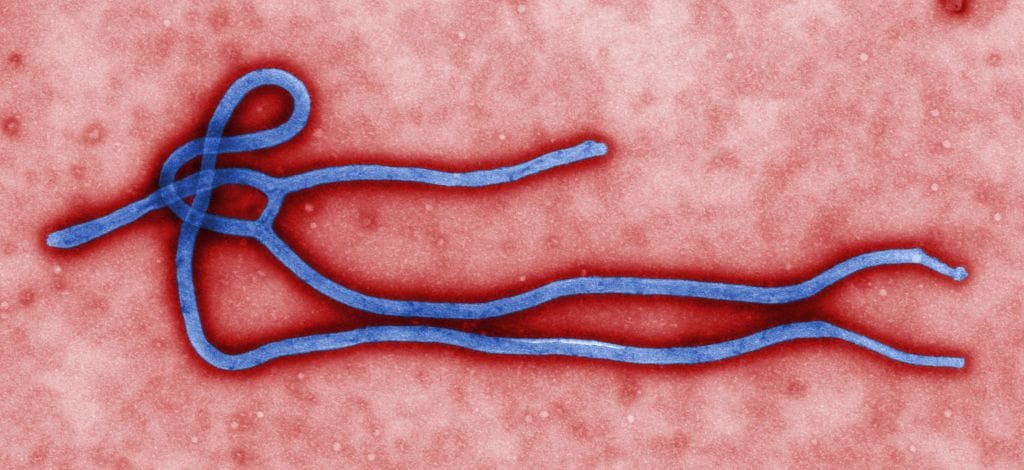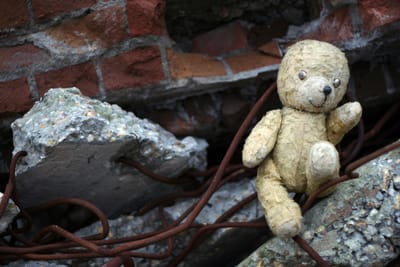What I Know About Ebola — Part III

"Viruses have to live somewhere."
— David Quammen, science writer
For a moment, it will look beautiful, a piece of abstract art. See, it's a loose blue thread on red velvet, a child’s scrawl of a blue man floating in a crimson tide, an oxbow gone wild cut off from its source, a knot unraveling, letting loose, what? in all that rosy mist bright as fresh blood on a handkerchief.
The image of an Ebola virion, a single strand of the virus chemically stained on a scientist’s slide, is the closest reporters can come to a color portrait of this lethal pathogen, typically captioned, benignly, as being the shape of a shepherd’s crook, the living cells of its host presumably its sheep.
Invisibly tiny to a human eye, an Ebola viron is a pouch of seven genes, millions of lipids and proteins, some of which form into a sharp, crystalline surface that can penetrate a cell’s membrane.
It’s not so different from us, except, it can’t exist without a host, us or some other mammal, say a bat or monkey.
Virologist Ed Rybicki describes viruses as not yet life but “the edge of life.”
To be a virus is live vicariously.
The third thing I know about Ebola is that it desires and intends nothing, neither to thrive nor to kill, more an organic copy machine than a dark-hearted villain.
The only way this virus can want to live is if it embodies a woman, a man, or a child deeply enough, and by then, it's usually too late.







Member discussion